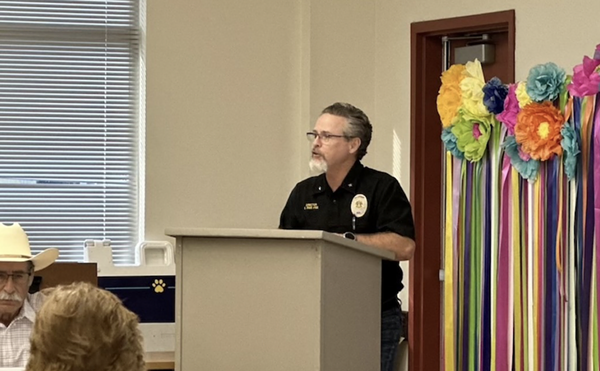If Bill and Shirley Connolly ever invite you over to their home for an evening of wholesome family fun, don’t worry about brushing up on your vocabulary, pop-culture references, or hand-eye coordination. Chances are you won’t be playing Scrabble, Trivial Pursuit, or Guitar Hero III: Legends of Rock while you’re there.
Instead, the Connollys want to take you further into the past, where their idea of the simplest form of entertainment precedes modern board games and video-game consoles.
Their game of choice is pachinko, and for the last nine years the Connollys have been buying, selling, and restoring these machines from their home in San Antonio. Described by many enthusiasts as a cross between pinball and slots, pachinko machines originated in Japan in the 1920s.
In the standard version of pachinko, the object of the game is to shoot a steel ball bearing onto the machine’s vertical playing field by pulling a spring-loaded handle, which loads the balls one by one from a tray. Once the bearing works its way through a pattern of tiny pins (think Plinko), the machine will pay out more balls depending on which pocket it lands in.
“The older machines are purely mechanical,” said Bill, whose pachinko passion began in high school when his father brought one home from an auction and set it up in their garage next to their Atari 2600. “It’s not high-tech electronics or circuitry. It’s just balls hitting levers.”
“A lot of people remember them as kids when their fathers came back from the war and they put them in the basement to play,” said Shirley. “As years went by, they ended up in the attic. Now, houses are getting cleaned out when people pass away and they find them and say, ‘I remember this from when I was a kid.’”
The Connollys have heard countless stories like this since taking up their hobby in 1999. While searching for a pachinko machine for their children, Bill and Shirley hit the jackpot when they met a former carnival worker who had 30 machines just rusting away in a barn.
Although most of the machines were decades old and in poor shape, traditional pachinko machines are easily fixed because of their simple mechanics. With Bill’s experience, fully restoring one pachinko machine takes about 40 hours of tinkering in the workshop.
“You can take them apart, clean all the parts, and put it back together, and it works,” Bill said. “It’s not like buying an arcade game and the monitor or circuit board goes out and you have to throw it away.”
Once the Connollys started to sell the restored pachinko machines on eBay, people began contacting them to see if they could repair their machines. As more and more people asked for help, Bill and Shirley thought the best remedy for everyone’s pachinko problems was to develop a step-by-step DIY manual, which you can find on their website, pachinkoman.com.
“Some people didn’t want to take the risk and ship the family heirloom, something grandpa brought back from the war, to us,” Bill explained. “We just wanted to help people. We couldn’t do it all ourselves.”
Instead, Bill and Shirley concentrate on their own pachinko projects and helping local owners work out the kinks in theirs.
“I got my first pachinko machine for my birthday when I was about 9 years old,” said local pachinko collector Michela Steele. “I remember I opened it, sat on the floor, and I didn’t move for hours. I liked the randomness of it. You flip the ball and you never know where it’s going to go. Every machine is different.”
The distinctiveness of each machine is what Shirley especially likes about pachinko. From acrobats to geishas to sumo wrestlers, each pachinko is enhanced with its own design.
“They have their own personality,” Shirley said. “Some have simple floral designs, and others have themes like pirates, boxing, baseball, the circus. We even found one with Snow White and the Seven Dwarfs.”
Although the Connollys admit they have a PlayStation 2 in their home for their 14-year-old son, they aren’t drawn to playing something so technologically advanced. They would rather stick to their pachinko machines.
“Generally the kids are more into video games,” Bill said. “The pachinko is a novelty. It’s fun but you can’t blow up Darth Vader on a pachinko.” •
















